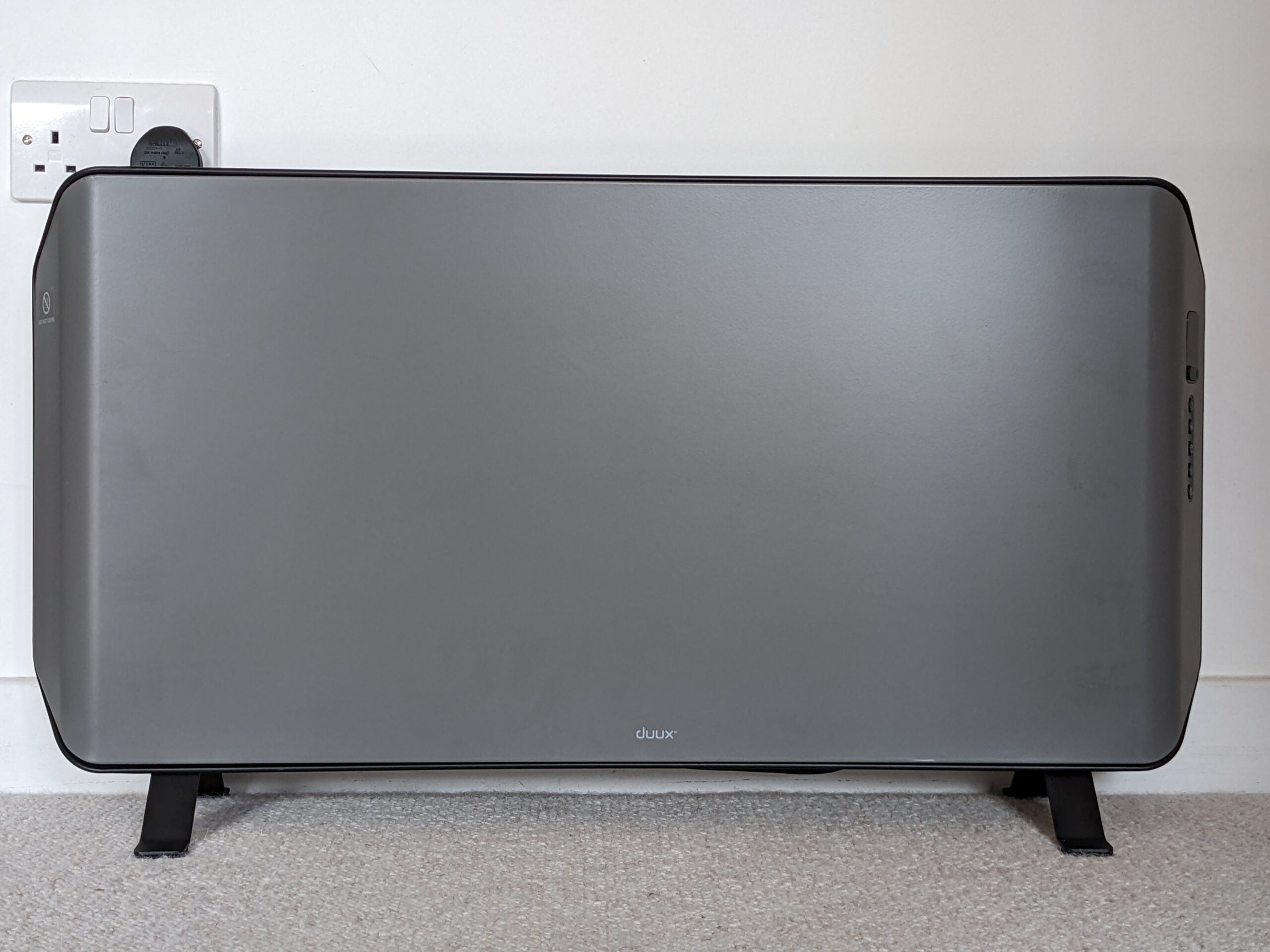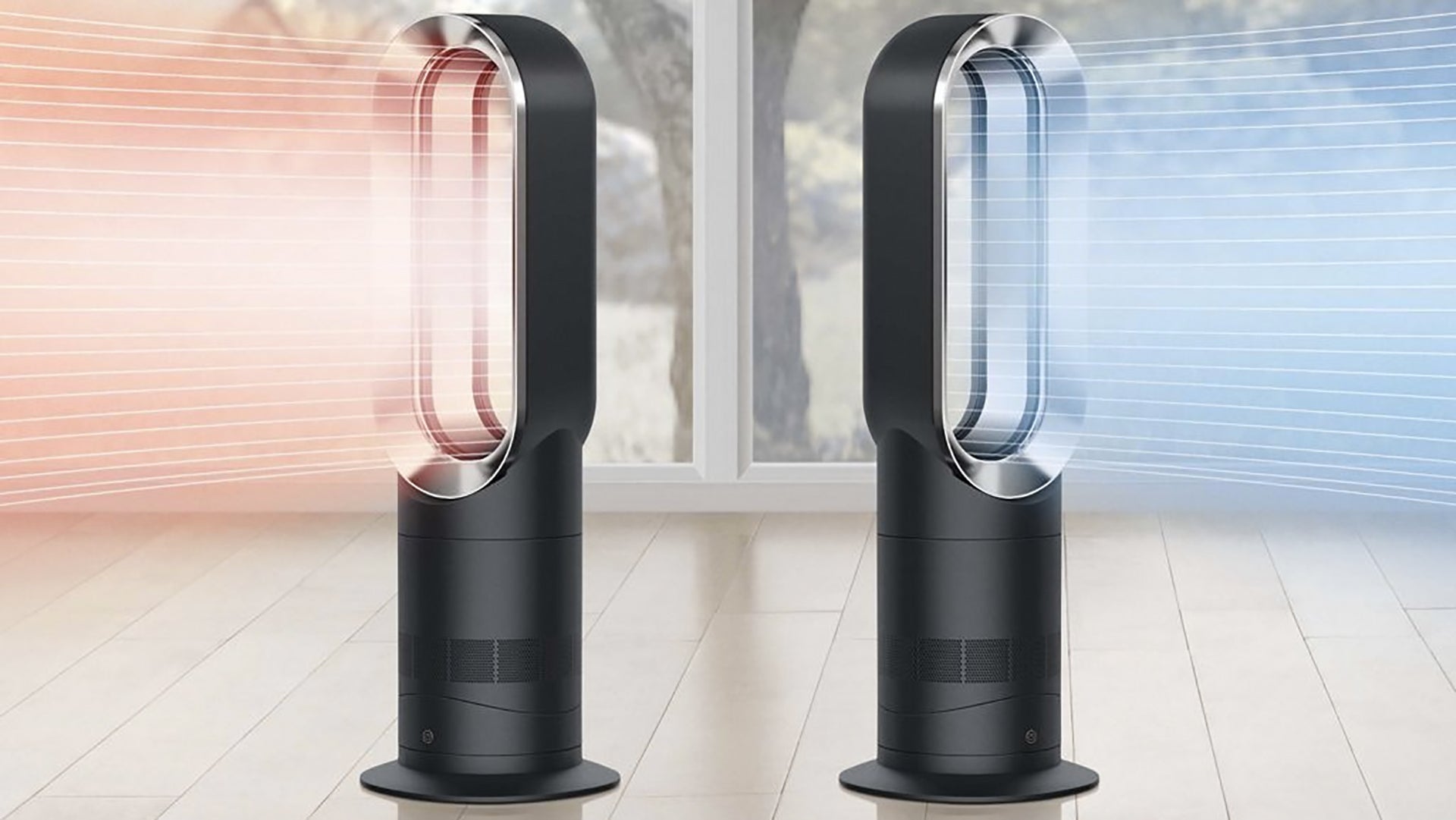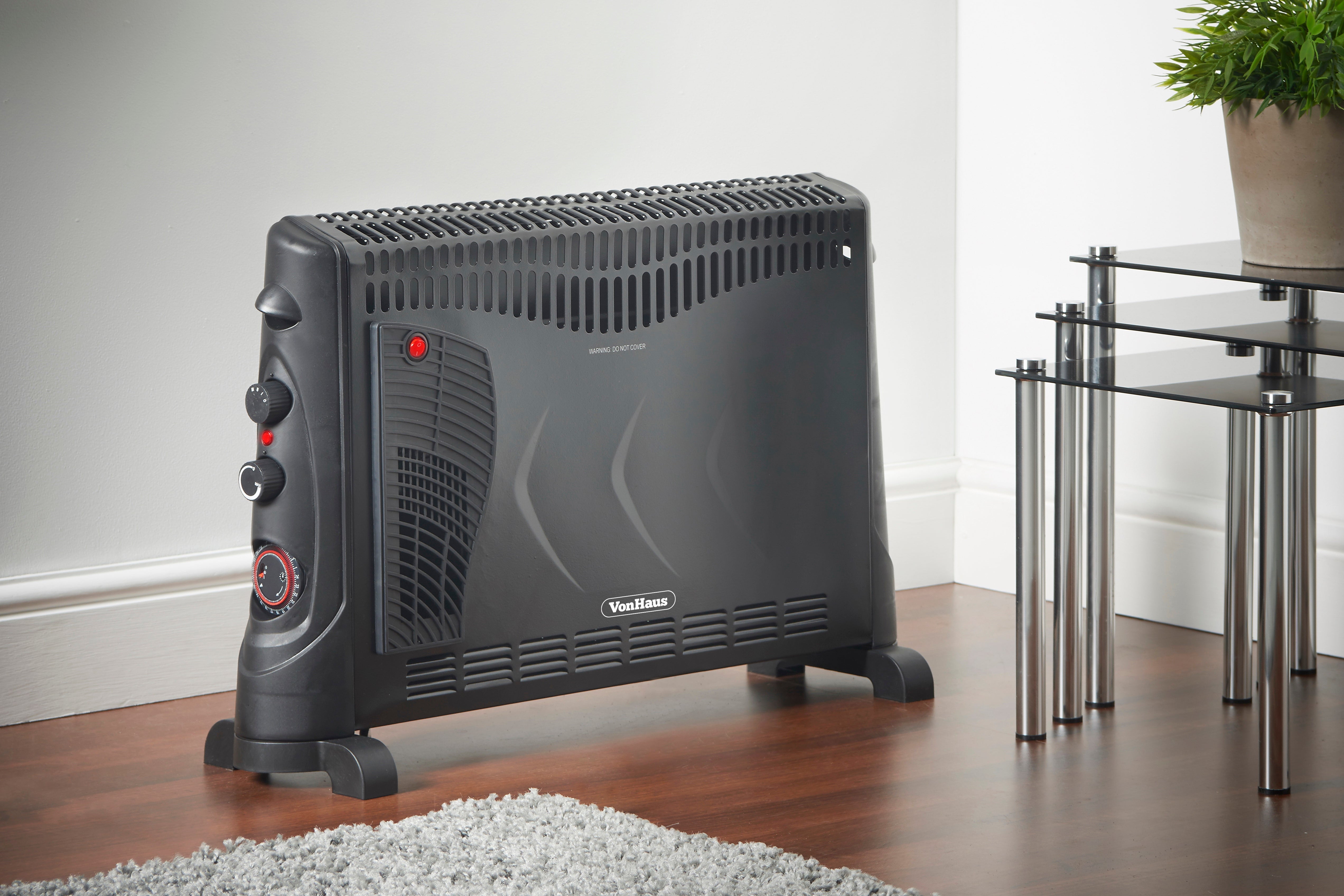Duux’s Edge 1500 is probably the most stylish electric convector heater that I’ve seen. It’s full of brilliant features, and is fairly effective despite its modest power rating. It’s an expensive device, however, and definitely not worth the outlay if you won’t use its scheduling or other smart features.
Pros
- Gorgeous, modern design
- Excellent smart features
- Remote and app control
Cons
- Expensive
- Could be expensive to run
Availability
- UKRRP: £149
- USAunavailable
- EuropeRRP: €180
- Canadaunavailable
- Australiaunavailable
-
TypeHeats rooms via convection and thermal radiation. -
Smart controlsApp-based control, including scheduling and timer. -
ThermostatBuilt-in thermostat lets this heater turn off when your room’s at the set temperature.
Introduction
The Duux Edge 1500 is an electric convection heater with smart control. As the name suggests, it’s rated at 1,500W – the range also includes 1kW and 2kW models.
I’ve tested a grey version, but all three models can also be had in white. Each arrives with feet and a wall mounting bracket, giving you a choice of where to use it.
Design and features
- A gorgeous, slimline, wall-mountable design
- Smart features including app control and open window detection
- Rated at 1,500W
You can buy electric convection heaters for around £30, so why spend £150 on Duux’s Edge 1500? Perhaps the most obvious reason is that it’s gorgeous, with a featureless front panel, rounded corners, and concealed vents. It feels properly designed and built, too – no paper-thin panels or wonky feet to be found here.
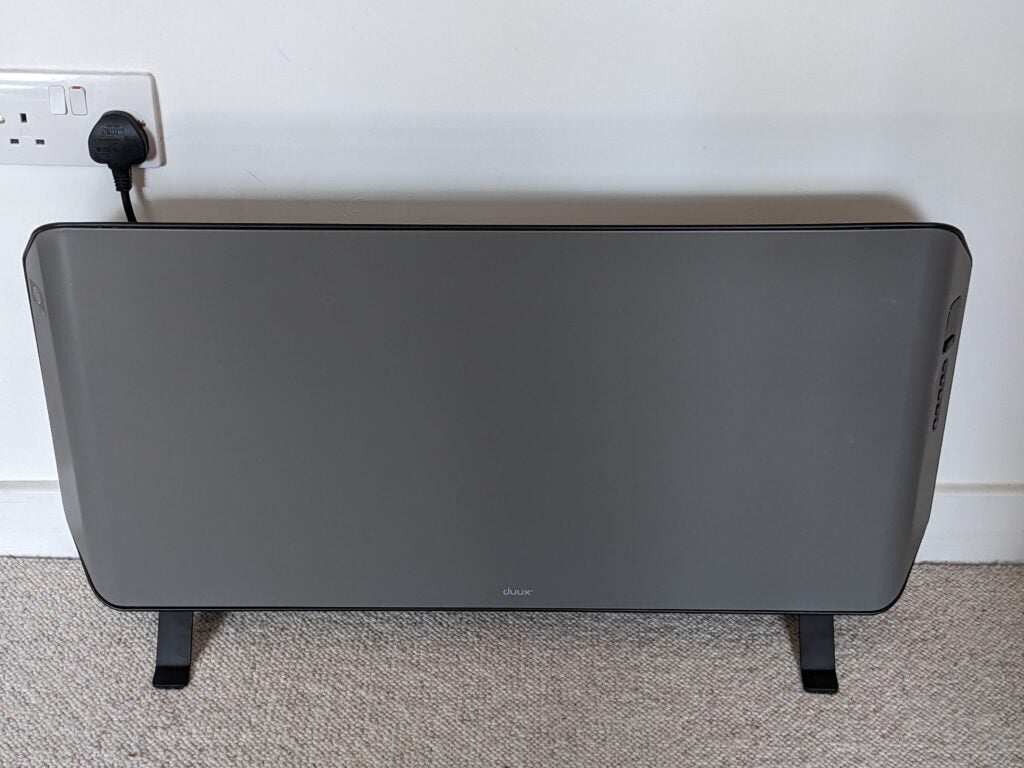
In fact, the Edge doesn’t strictly need feet at all. It’s also supplied with a sturdy-looking wall-mounting bracket, so you could permanently install it in homes without existing heating – I’ll discuss whether you’d want to later.
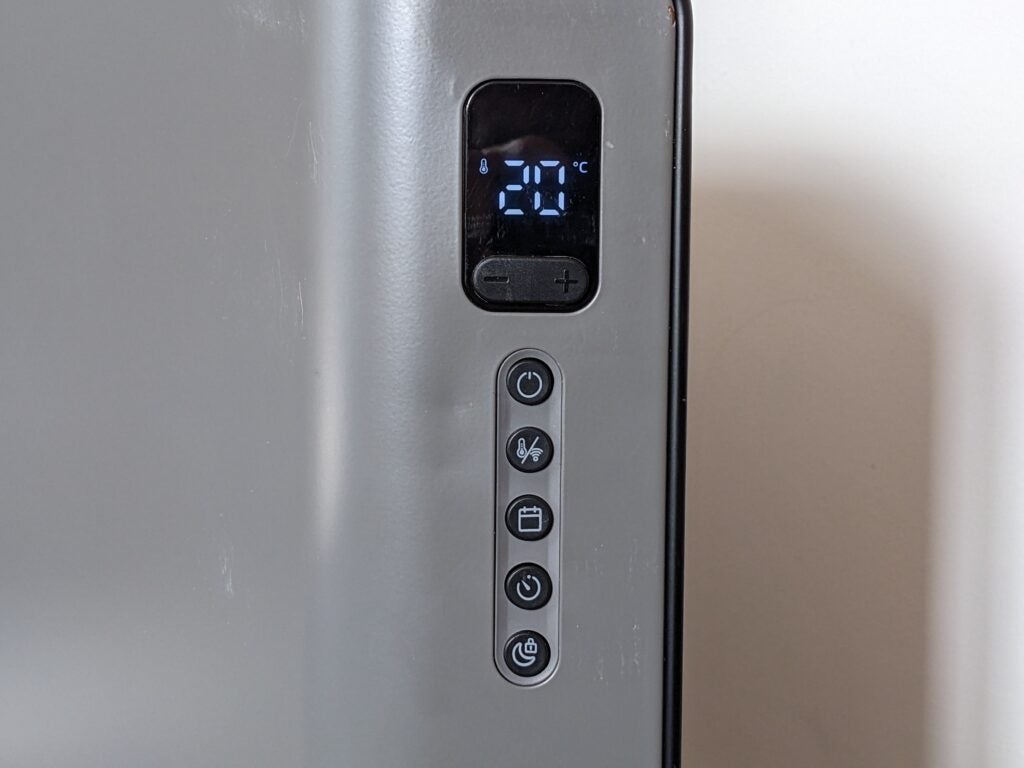
To the right, partially concealed thanks to the bevelled edge, there’s a control panel comprising a small, basic screen and a set of five buttons. These are duplicated on a small remote control, meaning you won’t have to keep walking over to the heater to change settings.
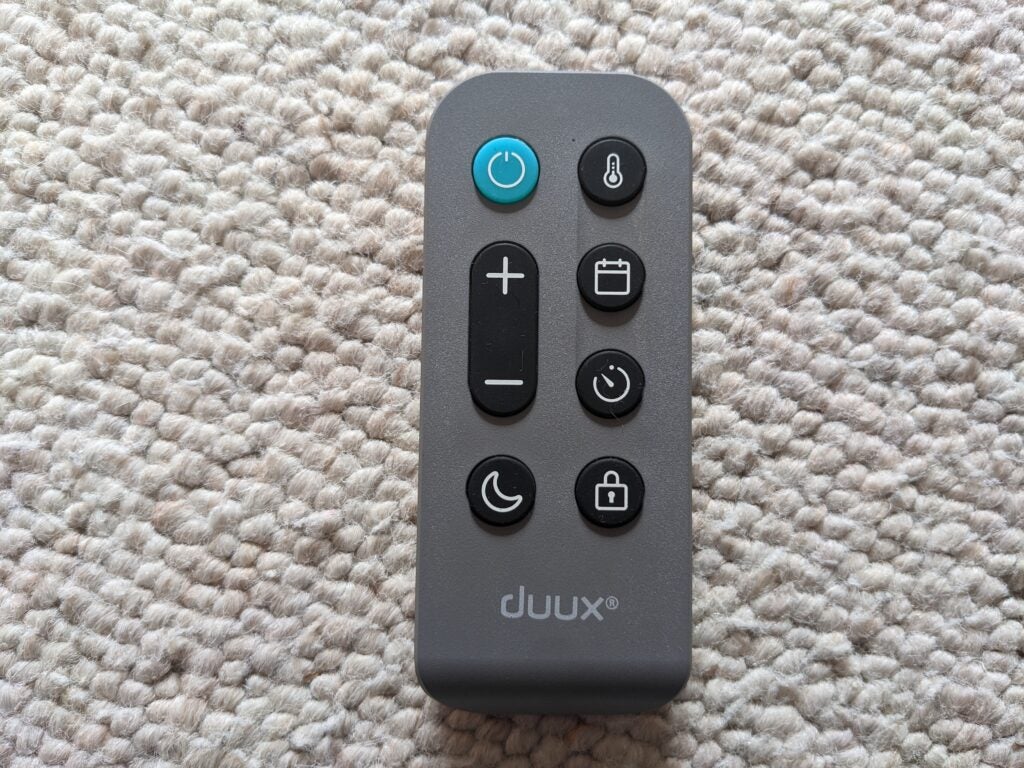
Then again, you don’t need to use the remote, either, as this heater works with the Duux app. I had some issues setting this up, with my version of the Duux app repeatedly failing to find the Edge. It turned out there is a newer version of the app that hasn’t been automatically rolled out.
Once I’d installed this it was the work of moments to connect to the heater, but at the time I reviewed it I couldn’t log in to my Duux account and get features such as a localised weather feed. Frustratingly, the app wouldn’t just let me enter my password: instead it emailed out a one-time login code – which never arrived.
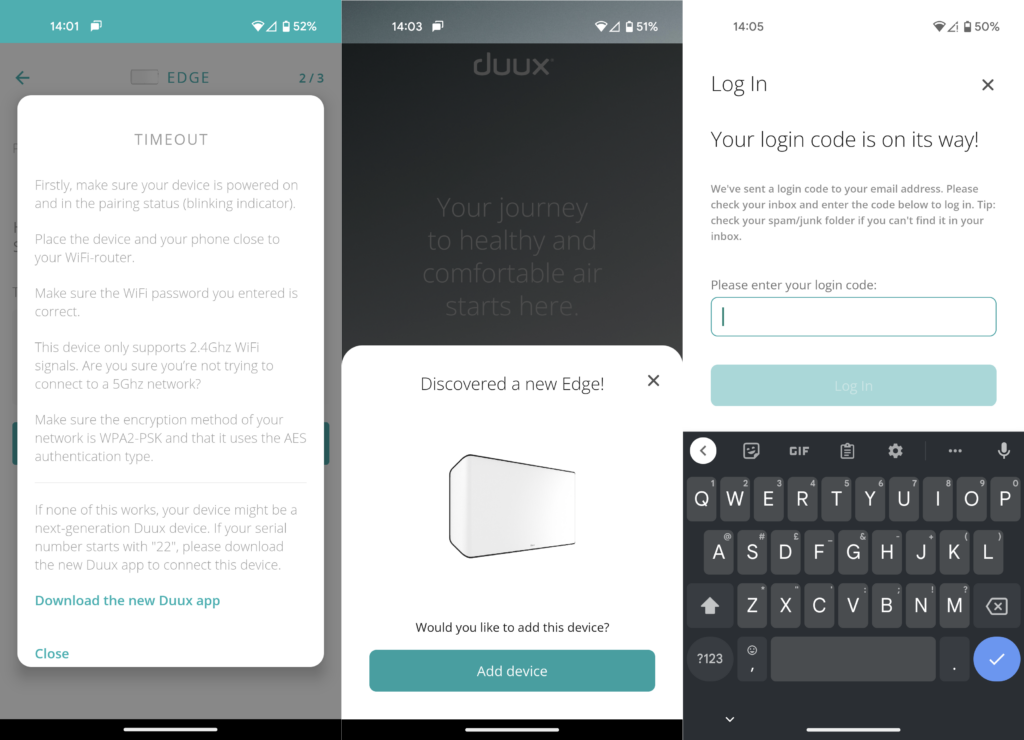
Duux’s app provides basic on/off and temperature control, along with the ability to set a run timer, enable the child lock and switch to night mode – which dims the display and silences the button beep.
This duplicates the on-device and remote controls, but with the app you can also configure custom schedules, rather than relying on the three predefined ones built into the device. This gives you a lot more control over how and when to heat.
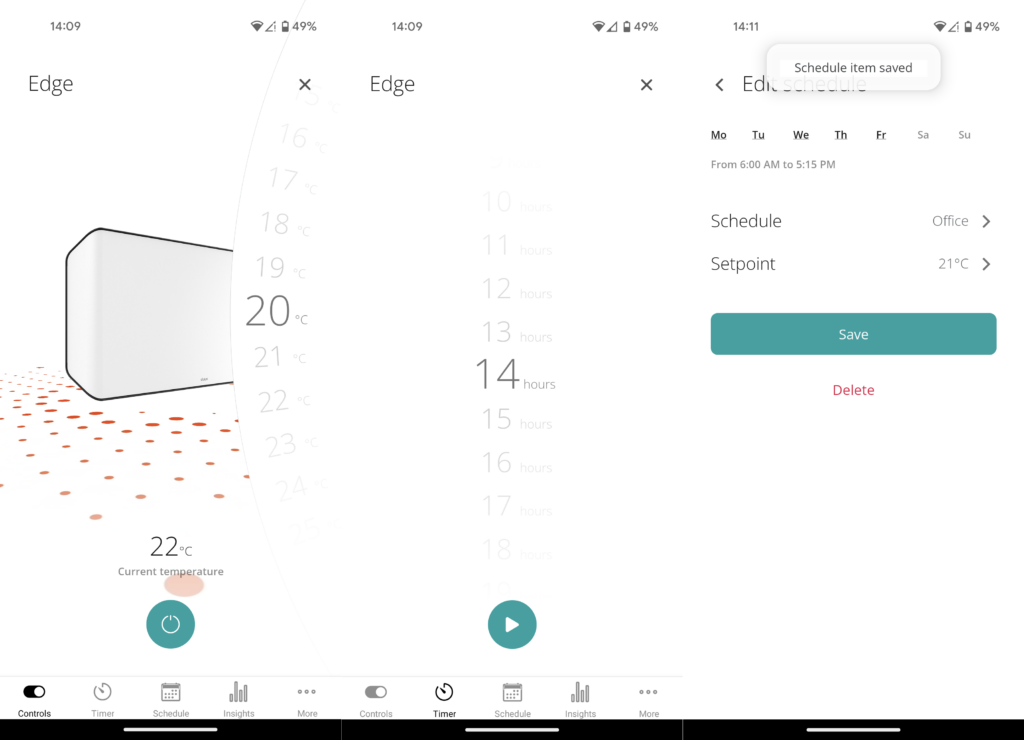
Overall, the Edge feels several cuts above entry level convection heaters, and has useful safety features including a physical on/off switch and tip-over protection.
The one omission I could spot is that there’s no handle, so it’s a bit tricky to move around – and impossible when it’s still hot. The Edge is further enhanced by its excellent set of features. That said, if you don’t need smart control, it is harder to justify paying its premium price.
Performance
- Effective heating
- Silent operation
- Could be expensive to run
With no fan, convection heaters are usually quiet, but with many you can still hear the ticking of expanding metal parts or heating elements. Not so the Edge 1500, which is silent other than the occasional click of its power relay, and its control beep – which is switched off in night mode. This makes it an excellent choice for bedrooms, where it’s much less of a disturbance than a fan heater.
On the flip side, the lack of a fan does mean that it takes longer for warm air to circulate the room. Over 30 minutes, it raised the temperature of my 48m3 bedroom from 17.7°C to 18.3°C an 0.6°C increase. For comparison, the MeacoHeat MotionEye 1.8kW fan heater added 1.4°C in the same time.
Although it’s rated at 1500W, I measured the Edge 1500’s power consumption at 1,608W when heating. When not heating, consumption fell below my power meter’s 1W minimum. The Edge consumed 0.81kWh of electricity over my 30-minute test, worth about 28p under the current 34p per kWh price cap, but this is the maximum possible figure – in more typical use it would cycle on and off when it reached the set temperature, resulting in significantly lower consumption, depending on the demand.
Like other electric convection heaters, the Edge is virtually 100% efficient – that’s to say, all of the electricity it consumes is turned directly to heat. However, much of this heat will be absorbed by the room, meaning it could take some time and cost quite a bit to get a room up to a comfortable temperature. That’s similar to conventional gas-fired radiator heating, but it’s a contrast with infra-red panel heaters, such as the Aeno Premium Eco Smart Heater, which heat your skin directly, and consume significantly less energy.
While electricity is so expensive, it’s hard to strongly recommend convection heaters like the Edge 1500 as a permanent heating solution as you certainly wouldn’t want to fill your home with several of them unless you had access to abundant cheap daytime electricity. While this is a beautiful and effective smart heater, it’s more power hungry than an infrared alternative, and it can’t exploit cheaper off-peak electricity as effectively as a storage heater.
Latest deals
Should you buy it?
You want a smart-looking heater: This is a great looking convection heater, enhanced by useful smart controls
You want a cheaper heater: This is not an ideal heater if you want the lowest running costs, or you don’t need smart features
Final Thoughts
Convection heaters aren’t sexy, but the Duux Edge 1500 gets about as close as possible. It’s a great looking device, and I love its build quality and useful smart features.
But with electricity prices as they are, it’s hard to recommend a heater that could cost more than 50p an hour to run. It’s a great choice if you’re not too concerned about money. If you are, I’d recommend an infrared panel heater instead: check out our guide to the best electric heaters.
How we test
Unlike other sites, we test every heater we review thoroughly over an extended period of time. We use industry standard tests to compare features properly. We’ll always tell you what we find. We never, ever, accept money to review a product.
Find out more about how we test in our ethics policy.
Used as our main heater for the review period
We measure the fan speed (if available) using an anemometer so that we can accurately compare performance between models
We measure the heat output of the fan and its effect on our test lab.
FAQs
You could easily set a schedule to use this heater only with off-peak electricity, but it doesn’t have the ability to store heat. If your off-peak period ran from 00:30-04:30, you’d get four hours of heating during the night, but you’d have to pay full rates to keep heating during the day, thus it wouldn’t be ideal.
There’s nothing to stop you installing several Duux Edge heaters. They’d be effective, too, but like other convector or fan heaters their running costs would add up. Install six of them to heat a four-bedroom home and you could be paying a maximum of £3 an hour under the current 34p per kilowatt hour cap.
It’s worth noting that many homes are protected by a 60A fuse, which may not be sufficient to cope with multiple convector or fan heaters. In the example above, six 1.5kW heaters together would draw a combined current of nearly 40A, which may leave limited headroom for you to run other power-hungry devices such as washing machines, kettles or ovens.


















